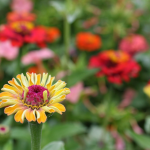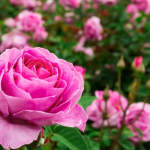5 Ways To Beautify Your Landscape With Native Plants
Landscape design is an art form that incorporates the space in one’s surroundings, including the lawn and garden. Native plants are becoming increasingly popular for gardens and landscapes because they are typically more resistant to pests, drought, and other invasive species. Read more about how to use native plants in your landscape on our blog!
Finding a Property Manager
If you’re looking to beautify your landscape with native plants, one of the first things you’ll need to do is find a property manager to help you with the process. There are a few different ways to go about this, but the best way is to start by asking for recommendations. You can also look online or in the yellow pages for potential candidates. Once you’ve narrowed your list of options, be sure to interview each one to get a feel for their experience and expertise.
Designing your Native Garden
When it comes to designing your native garden, the possibilities are endless. There are so many beautiful native plants to choose from that will add colour and interest to your landscape. Here are a few tips to help you get started:

1. Determine the purpose of your garden. Do you want a place to relax and enjoy the outdoors? Are you looking to attract wildlife? Or do you want to add some curb appeal to your home? Knowing the purpose of your garden will help you choose the right plants.
2. Consider the size of your space. Native gardens can be as small as a few pots on your porch or as large as a backyard. Choose plants that will fit well in the space you have available.
3. Select plants that are appropriate for your climate zone. Some native plants require more water than others, so choosing ones that will thrive in your area is important.
4.Think about the sun exposure in your garden. Some native plants need full sun, while others prefer partial shade. Select plants that will do well in the light conditions you have available.
5. Consider adding some edible natives to your garden! Many vegetables, fruits, and herbs are native to North America and can make a delicious addition to your landscape.
By following these tips, you’ll be on your way to designing a beautiful native garden that will enhance your outdoor space and provide food and shelter for
Seeds and Plants
If you’re looking for ways to beautify your landscape with native plants, you should keep a few things in mind. First, native plants are adapted to the local climate and soil, making them easier to care for than non-native varieties. Second, native plants provide food and shelter for local wildlife, so you’ll be helping the environment by choosing them. Here are a few of our favourite native plants to get you started:
Blanketflower (Gaillardia pinnatifada): This cheerful flower is a great choice for sunny spots in your yard. It’s drought-tolerant and attracts bees, butterflies, and birds.
California poppy (Eschscholzia Californica): Another pretty option for sunny areas, California poppies are low-maintenance and easy to grow. They’re also the state flower of California!
Lupine (Lupinus spp.): Lupines come in various colours and make a beautiful addition to any garden. They’re good choices for sun and shade and attract pollinators like bees and hummingbirds.
Penstemon (Penstemon spp.): Penstemons are another versatile plant that does well in sun or shade. They come in many different colours and shapes so that you can find the perfect variety for your landscape. Plus, they’re resistant to deer and rabbits!
Companion Planting
Native plants are not only beautiful, but they can also be beneficial to your landscape. Companion planting is a great way to add texture and interest to your garden while supporting native plant species. Here are some tips on how to get started with companion planting in your landscape:
1. Choose the right location. Companion planting should be done in an area that receives at least six hours of sunlight daily.
2. Prepare the soil. The soil should be loose and well-drained before you start planting.
3. Select native plants that are compatible with each other. Make sure to research which plants will do well together before planting.
4. Plant the natives close together. This will help them support each other as they grow.
5. Water regularly and mulch around the plants to help retain moisture.
Companion planting is a great way to beautify your landscape and support native plant species. By following these simple …






